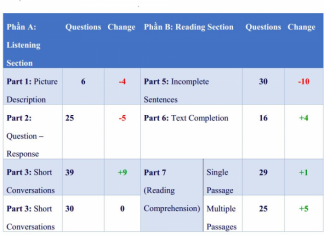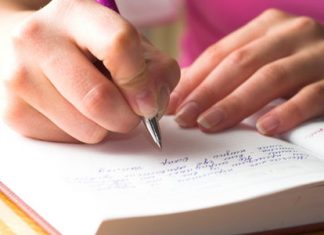Câu bị động là 1 trong những cấu trúc cơ bản về hành trình chinh phục đề thi TOEIC. Các bài tập Câu bị động – Passive voice có đáp án theo từng thì để các bạn vừa học vừa thực hành làm bài tập có đáp án chi tiết dễ tiếp thu hơn.
I. Câu bị động là gì?
Câu bị động là câu được dùng khi muốn nhấn mạnh đến đối tượng chịu tác động của hành động hơn là hành động đó. Theo mỗi thì sử dụng thì cấu trúc của câu bị động cũng thay đổi theo.
Câu bị động là 1 trong những cấu trúc cơ bản không thể bỏ qua nếu bạn đang trong hành trình chinh phục những đỉnh cao mới trong TOEIC/IELTS/Tiếng anh. Cùng Eng4 tìm hiểu thêm cấu trúc này nhé.
Câu bị động (Passive Voice) được dùng khi muốn nhấn mạnh đến đối tượng chịu tác động của hành động hơn là bản thân hành động đó. Thời của động từ ở câu bị động phải tuân theo thời của động từ ở câu chủ động.
Xem thêm bài viết được nhiều người tìm kiếm nhất:
1. Cấu trúc câu bị động
Chúng ta có cấu trúc câu chủ động là:
| S + V + O |
2. Công thức Passive voice chung
| S + be + V3 |
Cấu trúc câu bị động ở dạng thì nào thì chia tobe theo thì đó mà các bạn cùng tìm hiểu dưới đây.
Nếu câu có động từ và hai tân ngữ thì muốn nhấn mạnh tân ngữ nào thì thường sẽ dùng tân ngữ đó chuyển thành chủ ngữ bị động. Trong trường hợp chung, tân ngữ được chọn là tân ngữ gián tiếp.
Ví dụ: I gave him a book = I gave a book to him = He was given a book (by me).
3. Tuy nhiên, bạn cần lưu ý 2 điểm sau
a. Nếu S – chủ ngữ trong câu chủ động là: they, people, everyone, someone, anyone, etc => thì không cần đưa vào câu bị động
Ví dụ: They stole my motorbike last night. (Bọn chúng lấy trộm xe máy của tôi đêm qua). ➤ My motorbike was stolen last night. (Xe máy của tôi đã bị lấy trộm đêm qua.)
b. Nếu là người hoặc vật
➤ Trực tiếp gây ra hành động thì dùng chuyển sang bị động sẽ dùng ‘by’
➤ Gián tiếp gây ra hành động thì dùng ‘with’
II. Câu bị động trong 4 thì cơ bản
bài tập câu bị đông thì hiện tại đơn và quá khứ đơn
1. Câu bị động thì hiện tại
| Thì | Chủ động | Bị động |
| Hiện tại đơn | S + V + O My mother often washes dishes. |
S + be + V3 (+ by Sb/ O) Dishes are often washed by my mother. |
| Hiện tại tiếp diễn | S + am/ is/ are + Ving + O She is making a cake. |
S + am/ is/ are + being + V3 (+ by Sb/ O) A cake is being made by her. |
| Hiện tại hoàn thành | S + have/ has + V3 + O He has washed his car for hours. |
S + have/ has + been + V3 (+ by Sb/ O) His car has been washed by him for hours. |
2. Câu bị động thì quá khứ
| Thì | Chủ động | Bị động |
| Quá khứ đơn | S + V-ed + O My mother bought that washing machine in 2010. |
S + was/were + V3 (+ by Sb/ O) That washing machine was bought by my mother in 2010. |
| Quá khứ tiếp diễn | S + was/were + Ving + O Yesterday morning she was cutting the grass. |
S + was/were + being + V3 (+ by Sb/ O) The grass was being cut by her yesterday morning. |
| Quá khứ hoàn thành | S + had + V3 + O She had cooked lunch before leaving. |
S + had + been + V3 (+ by Sb/ O) Lunch had been cooked by her before she left. |
3. Câu bị động thì tương lai
| Thì | Chủ động | Bị động |
| Tương lai đơn | S + will V + O I will feed the dogs. |
S + will be + V3 (+ by Sb/ O) The dogs will be fed. |
| Tương lai tiếp diễn | S + will be + Ving + O I will be washing dishes this time tomorrow. |
S + will be + being + V3 (+ by Sb/ O) Dishes will be being washed by me this time tomorrow. |
| Tương lai hoàn thành | S + will have + V3 + O They will have completed the assignment by the end of January. |
S + will have + been + V3 (+ by Sb/ O) The assignment will have been completed by the end of January. |
4. Câu bị động sử dụng động từ khuyết thiếu
Riêng với động từ khuyết thiếu, công thức của câu bị động có sự khác biệt một chút:
| S + modal verb + be + V3 (+ by O) |
Dạng đặc biệt: Need + Ving = Need to be + V3

III. Bài tập câu bị động( PASSIVE VOICE)
Exercise 1: Chuyển các câu sau sang thể bị động.
- The waiter brings me this dish.
- Our friends send these postcards to us.
- Their grandmother told them this story when they visited her last week.
- Tim ordered this train ticket for his mother.
- She showed her ticket to the airline agent.
- Jim baked this cake yesterday.
- They are going to buy a new apartment next year.
- The shop assistant handed these boxes to the customer.
- The board awarded the first prize to the reporter.
- Have you sent the Christmas cards to your family?
- The committee appointed Alice secretary for the meeting.
- Tom will give Anna a ride to school tomorrow.
- They keep this room tidy all the time.
- We gave Ann some bananas and some flowers.
- They moved the fridge into the living room.
Exercise 2: Chuyển các câu hỏi sau sang thể bị động.
- When will you do the work?
- How are you going to deal with this problem?
- How do you spend this amount of money?
- I wonder whether the board of directors will choose Susan or Jane for the position.
- How did the police find the lost man?
Exercise 3: Cho dạng đúng của các động từ sau đây (có thể là chủ động hoặc bị động) để tạo thành một bài IELTS Writing Task 1 hoàn chỉnh.

The first diagram (1-illustrate)____________the process of cement manufacture, and the second diagram (2-show)_____________ the materials that go into the production of concrete.
It is clear that there are five stages in the production of cement, beginning with the input of raw materials and ending with bags of the finished product. To produce concrete, four different materials (3-mix)______________ together.
At the first stage in the production of cement, limestone and clay (4-crush)____________ to form a powder. This powder then (5-mix)______________ before it passes into a rotating heater. After heating, the resulting mixture (6-grind)_______________, and cement (7-produce)______________. Finally, the cement (8-package)_______________in large bags.
Cement is one of the four raw materials that (9-use)_______________ in the production of concrete, along with gravel, sand and water. To be exact, concrete (10-consist)_______________ of 50% gravel, 25% sand, 15% cement and 10% water. All four materials are blended together in a rotating machine called a concrete mixer.
Đáp án Bài tập câu bị động (PASSIVE VOICE)
Exercise 1
- This dish is brought to me by the waiter.
- These postcards are sent to us by our friends.
- They were told this story by their grandmother when they visited her last week.
- This train ticket was ordered for Tom’s mother by him.
- Her ticket was shown to the airline agent by her.
- This cake was baked by Jim yesterday.
- A new apartment is going to be bought next year.
- The customer was handed these boxes by the shop assistant.
- The first prize was awarded to the reporter by the board.
- Have the Christmas cards been sent to your family?
- Alice was appointed secretary for the meeting by the committee.
- Anna will be given a ride to school by Tom tomorrow.
- This room is kept tidy all the time.
- Ann was given some bananas and some flowers by us.
- The fridge was moved into the living room.
Exercise 2
- When will the work be done?
- How is this problem going to be dealt with?
- How is this amount of money spent?
- I wonder whether Susan or Jane will be chosen for the position by the board of directors.
- How was the lost man found by the police?
Exercise 3
- illustrates
- shows
- are mixed
- are crushed
- is then mixed
- is ground
- is produced
- is packaged
- are used
- consists



























